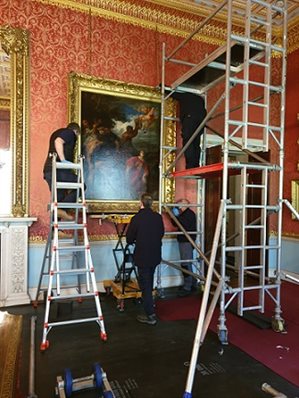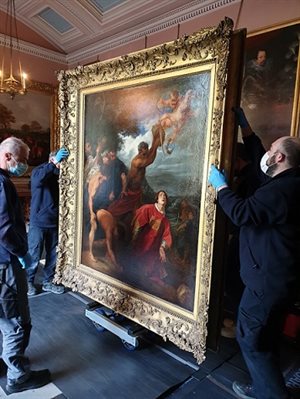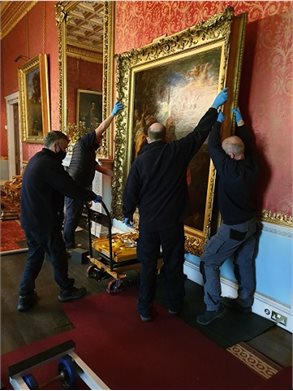The Stoning of St Stephen by Van Dyck:on loan to Rome
How do you move a priceless 400-year-old painting from Cheshire to Rome?

“With great difficulty!” says Carolyn Latham, Mansion and Collections Manager at Tatton Park Mansion. “And meticulous preparation, which our team has been working on for months. The painting measures roughly six feet tall by five feet wide and took the strength of several people to lower it down from the wall of the Drawing Room. It is now receiving careful restoration and stabilisation work from an expert Conservator, before it’s packed up ready for the journey to Rome.”
Thought to have been commissioned in 1623 for the ‘Spanish Chapel’ in Rome, this internationally important piece of art has moved from Italy, to Spain and then - since Wilbraham Egerton buying it in 1814 - it has enjoyed a domineering position in the Drawing Room at Tatton Park Mansion in Cheshire for over 200 years. But now it is on the move again.
“It’s a wonderful feather in our cap for a prestigious gallery such as Scuderie del Quirinale in Rome to ask Tatton Park to contribute a piece to their exhibition. The fact that artwork in our collection here in Knutsford is of international significance, highlights the quality of the objects on display in the Mansion.” says Carolyn.
Is it a Roman homecoming for St. Stephen?
17th century painter Sir Anthony Van Dyck (1599-1641), left his native Antwerp in 1621 and travelled to Italy. In spring 1624 he reached Sicily and not long after his arrival, the island was struck by a violent outbreak of plague.
Although Van Dyck’s inspiration was the martyrdom of St. Stephen, it’s believed that his series of major paintings along religious themes produced during his time on the island, such as Tatton Park’s Stoning of St. Stephen, played an important role in Italy’s expression and thanks for their deliverance from the epidemic (ref: Robin Blake, Van Dyck biographer).
Despite it being first recorded in the Church of San Pascual Bailon in Madrid in 1793, it was painted c1624, reputedly for the ‘Spanish Chapel’ in Rome.
